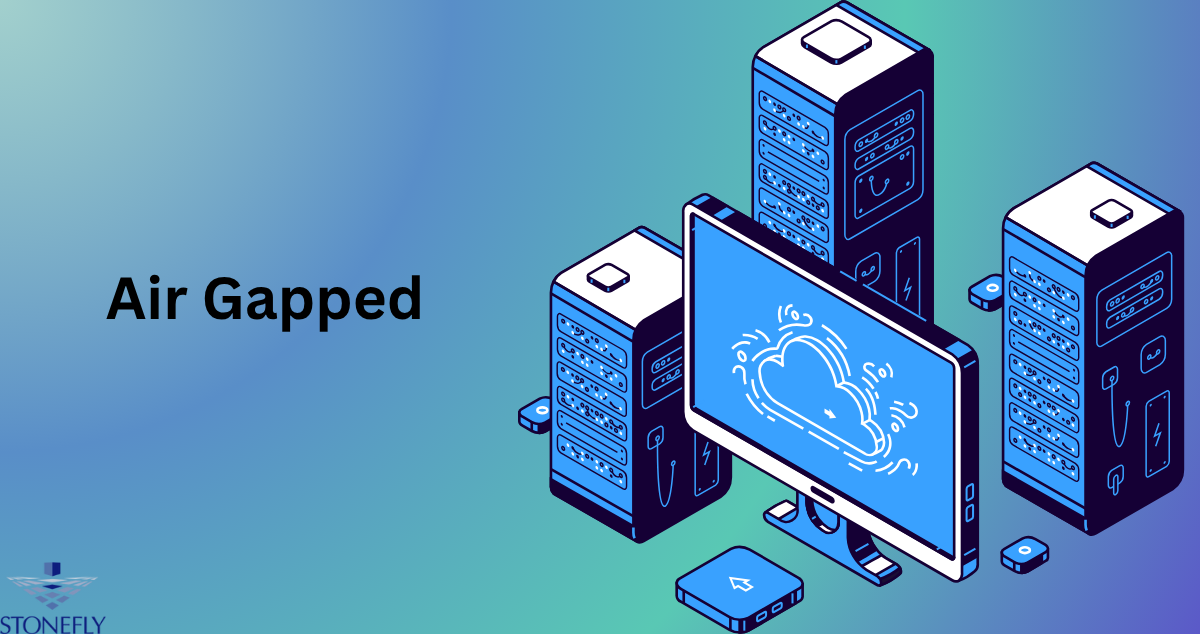Keeping Data Safe with Air Gapped Security

Real-Time Alerts and Reports: Keeping Data Safe with Air Gapped Security
In today’s fast-paced digital environment, your data doesn’t
sleep—and neither should your defense systems. Whether you’re managing a local
business or running an enterprise-level operation, staying informed about
what’s happening to your data in real-time is crucial. You can't fix what you
don’t know is broken, right? That’s where real-time alerts and reporting
come in. These features keep a vigilant eye on your storage environment and
notify you of any unusual activity before it snowballs into something more
damaging.
One powerful solution that complements real-time monitoring
perfectly is Air Gapped Security. This approach involves keeping a
secure, isolated backup of your data that’s disconnected from your primary
network. It adds an additional layer of defense, especially useful when alerts
signal something’s wrong—like a ransomware attack or an internal breach. With
Air Gapped Security, even if your primary systems are compromised, your data
stays untouched and recoverable.
The Importance of Real-Time Monitoring in Data Storage
Why Does Monitoring Matter?
Imagine driving a car without a dashboard. No speedometer,
no fuel gauge, no warning lights. That’s what running a data infrastructure
without monitoring tools feels like. You might cruise along fine for a while,
but when something breaks down, you won’t know until it’s too late.
Monitoring systems in modern storage solutions offer:
- Instant
notifications about security breaches
- Usage
reports to help manage space efficiently
- Alerts
for hardware failures or resource exhaustion
- Patterns
of irregular access indicating possible insider threats
When these alerts go off, you need more than just
notifications—you need a backup plan. That’s where Air Gapped Security
becomes critical. It’s not just a backup—it’s a backup in a bunker, untouchable
by any live threat.
Types of Real-Time Alerts That Protect Your Data
1. Security Breach Notifications
The most alarming, and arguably most essential, type of
alert is one that tells you when your system is under attack. This might be:
- Unauthorized
access attempts
- Suspicious
data transfers
- Changes
to file permissions or structures
An air-gapped backup acts as a clean, uncontaminated version
of your data, which can be restored instantly if a breach does occur.
2. Storage Capacity Thresholds
Hitting storage capacity limits unexpectedly can lead to
data loss, halted operations, or expensive emergency upgrades. Real-time
reports help you:
- Predict
future storage needs
- Reallocate
or scale resources efficiently
- Avoid
system downtime or sluggish performance
And if your main storage system falters under pressure? Air
Gapped Security ensures that critical data isn’t trapped or deleted due to
overloads.
3. System Health Warnings
When your storage infrastructure begins to show signs of
wear—like failing disks, overheating servers, or degraded performance—real-time
alerts step in. These warnings help you:
- Replace
hardware before failure
- Adjust
loads to prevent overheating
- Perform
maintenance during off-peak hours
Key Features of Effective Reporting Systems
Not all monitoring tools are created equal. Here’s what sets
the best apart:
Granular Insights
You need the ability to drill down—not just high-level
overviews. Detailed reports can show:
- Which
user accessed which file
- When
changes were made
- What
data was downloaded or shared externally
This is especially vital in regulatory environments, where
audit trails are mandatory.
Customizable Alerts
Every organization has different priorities. Customizable
alerts ensure you're notified only when it matters most—whether that's an attempt
to delete critical folders or a spike in bandwidth usage.
Historical Reporting
Sometimes the problem started yesterday—or last week.
Historical logs let you identify patterns and potential weak points. When
combined with Air Gapped Security, this historical insight helps
determine what version of the data is safest to restore.
Integrating Real-Time Alerts with Air Gapped Security
So, how does Air Gapped Security fit into the real-time
monitoring picture?
1. Isolation = Immunity
Air-gapped storage is physically or logically separated from
your primary network. Even if real-time alerts reveal malware activity or
network breaches, the backup remains unaffected.
2. Fast Recovery with Confidence
When alerts indicate that your active data is compromised,
you can confidently roll back to your last secure air-gapped copy, without the
risk of reintroducing malware.
3. Validation Through Monitoring
Some advanced air-gapped systems still support limited,
one-way reporting capabilities. That means you can receive health updates on
your backup system without risking exposure—ensuring it's always ready for
restoration if the worst happens.
Best Practices for Implementing Real-Time Monitoring and Air Gapped
Security
To get the most out of your data protection setup, combine
strategy with smart implementation:
1. Set Thresholds Wisely
Don't set your alert bar too low—getting pinged for every
minor event leads to alert fatigue. Instead, define thresholds that indicate
real risk or require quick action.
2. Train Your Team
Knowing about alerts is only helpful if your team knows what
to do with them. Set clear protocols for each type of notification, from failed
login attempts to breached capacity limits.
3. Regularly Update and Test Air-Gapped Systems
Make sure your air-gapped storage isn't a dusty time
capsule. Rotate and test backup versions regularly to ensure their integrity
and compatibility with your current systems.
4. Use Automated Alert Management Tools
Tools that categorize, prioritize, and escalate alerts
reduce human error and speed up response times.
Conclusion
Real-time alerts and reporting aren't just technical
features—they’re your first line of defense in a world full of digital threats.
But knowing something’s wrong is only half the battle. The real power lies in
what you can do about it. And that’s where Air Gapped Security shines.
With air-gapped backups standing by and real-time alerts
keeping you informed, your data protection plan transforms from reactive to
proactive. You're not just hoping nothing goes wrong—you're ready when it does.
So, if your data matters (and it always does), don’t just
watch it—protect it, prepare for the worst, and respond with speed.
Because when danger comes knocking, every second counts.
FAQs
1. What is an air-gapped backup, and how does it differ from traditional
backups?
An air-gapped backup is isolated from your primary
network—physically or logically—making it unreachable by malware, ransomware,
or internal sabotage. Unlike traditional backups that may still be connected to
the live system, air-gapped copies are immune to real-time threats.
2. How do real-time alerts help in avoiding data loss?
Real-time alerts notify administrators of suspicious or
unusual activity, like unauthorized access or disk failures. Early detection
allows for quick intervention, preventing potential data loss or service
downtime.
3. Can air-gapped systems still receive health reports without being
vulnerable?
Yes. Some air-gapped systems use one-way communication to
send health and status updates without allowing external access. This keeps the
system secure while still providing necessary insights.
4. What types of activities typically trigger real-time alerts in storage
systems?
Alerts can be triggered by unauthorized login attempts,
unexpected data transfers, changes to critical files, approaching storage
limits, and hardware issues like failing disks or overheating.
5. How often should I test my air-gapped backup systems?
It’s recommended to test air-gapped backups monthly or
quarterly. This includes checking data integrity, restoring test files, and
ensuring backup software compatibility with current infrastructure.




